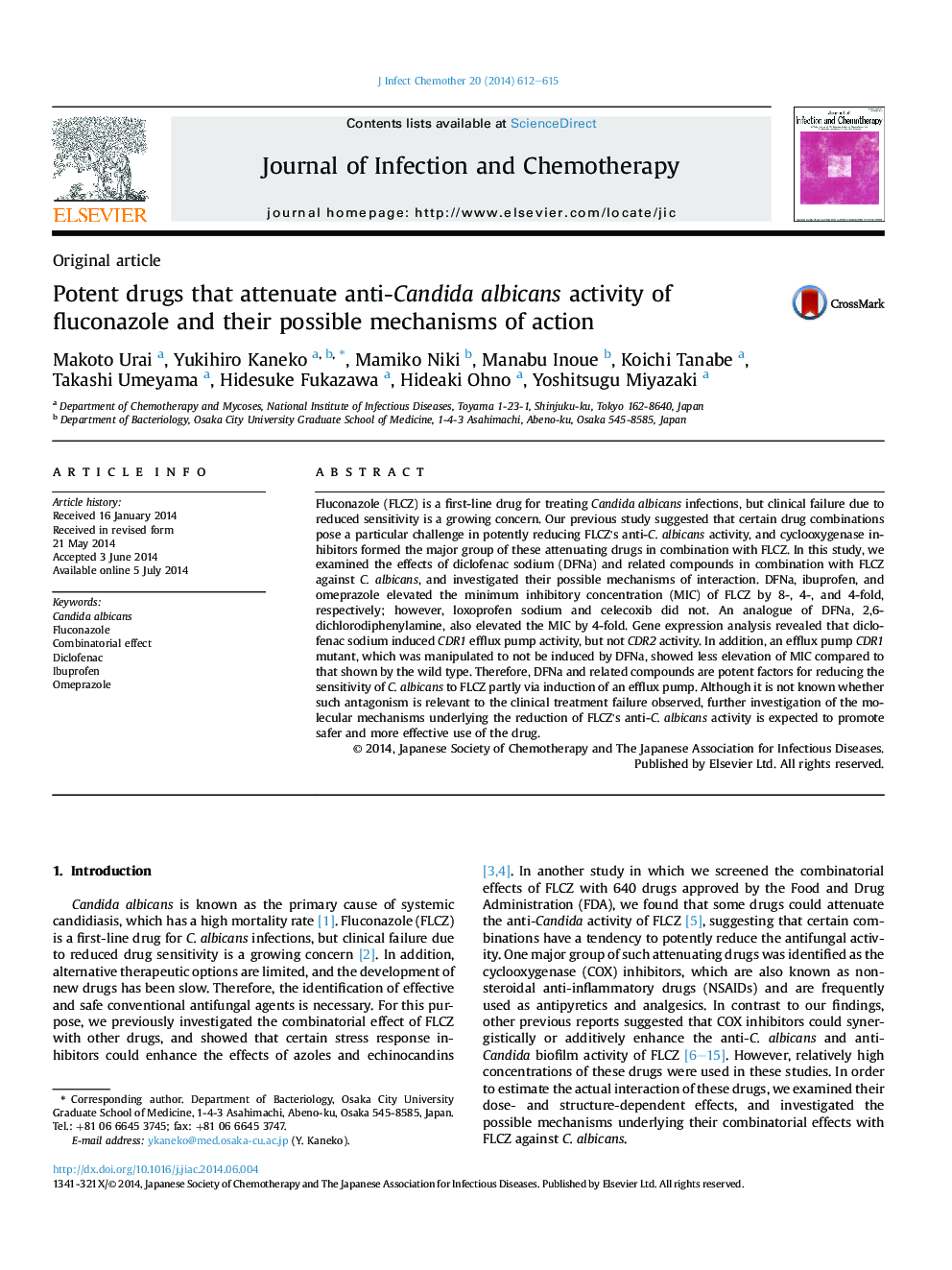| Article ID | Journal | Published Year | Pages | File Type |
|---|---|---|---|---|
| 6123640 | Journal of Infection and Chemotherapy | 2014 | 4 Pages |
Abstract
Fluconazole (FLCZ) is a first-line drug for treating Candida albicans infections, but clinical failure due to reduced sensitivity is a growing concern. Our previous study suggested that certain drug combinations pose a particular challenge in potently reducing FLCZ's anti-C. albicans activity, and cyclooxygenase inhibitors formed the major group of these attenuating drugs in combination with FLCZ. In this study, we examined the effects of diclofenac sodium (DFNa) and related compounds in combination with FLCZ against C. albicans, and investigated their possible mechanisms of interaction. DFNa, ibuprofen, and omeprazole elevated the minimum inhibitory concentration (MIC) of FLCZ by 8-, 4-, and 4-fold, respectively; however, loxoprofen sodium and celecoxib did not. An analogue of DFNa, 2,6-dichlorodiphenylamine, also elevated the MIC by 4-fold. Gene expression analysis revealed that diclofenac sodium induced CDR1 efflux pump activity, but not CDR2 activity. In addition, an efflux pump CDR1 mutant, which was manipulated to not be induced by DFNa, showed less elevation of MIC compared to that shown by the wild type. Therefore, DFNa and related compounds are potent factors for reducing the sensitivity of C. albicans to FLCZ partly via induction of an efflux pump. Although it is not known whether such antagonism is relevant to the clinical treatment failure observed, further investigation of the molecular mechanisms underlying the reduction of FLCZ's anti-C. albicans activity is expected to promote safer and more effective use of the drug.
Related Topics
Life Sciences
Immunology and Microbiology
Applied Microbiology and Biotechnology
Authors
Makoto Urai, Yukihiro Kaneko, Mamiko Niki, Manabu Inoue, Koichi Tanabe, Takashi Umeyama, Hidesuke Fukazawa, Hideaki Ohno, Yoshitsugu Miyazaki,
